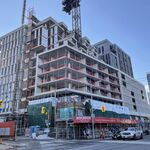TOareaFan
Superstar
Really all GO lines should be on 30 minutes or better service.
I think most here would agree with that....the question is do you get there by
1. Moving one line to 30 minute frequencies before any other line has any off peak service; or
2. Do you devote all your recources to getting all lines to current lakeshore service levels then start moving all lines to 30 minutes
I would pick number 2




